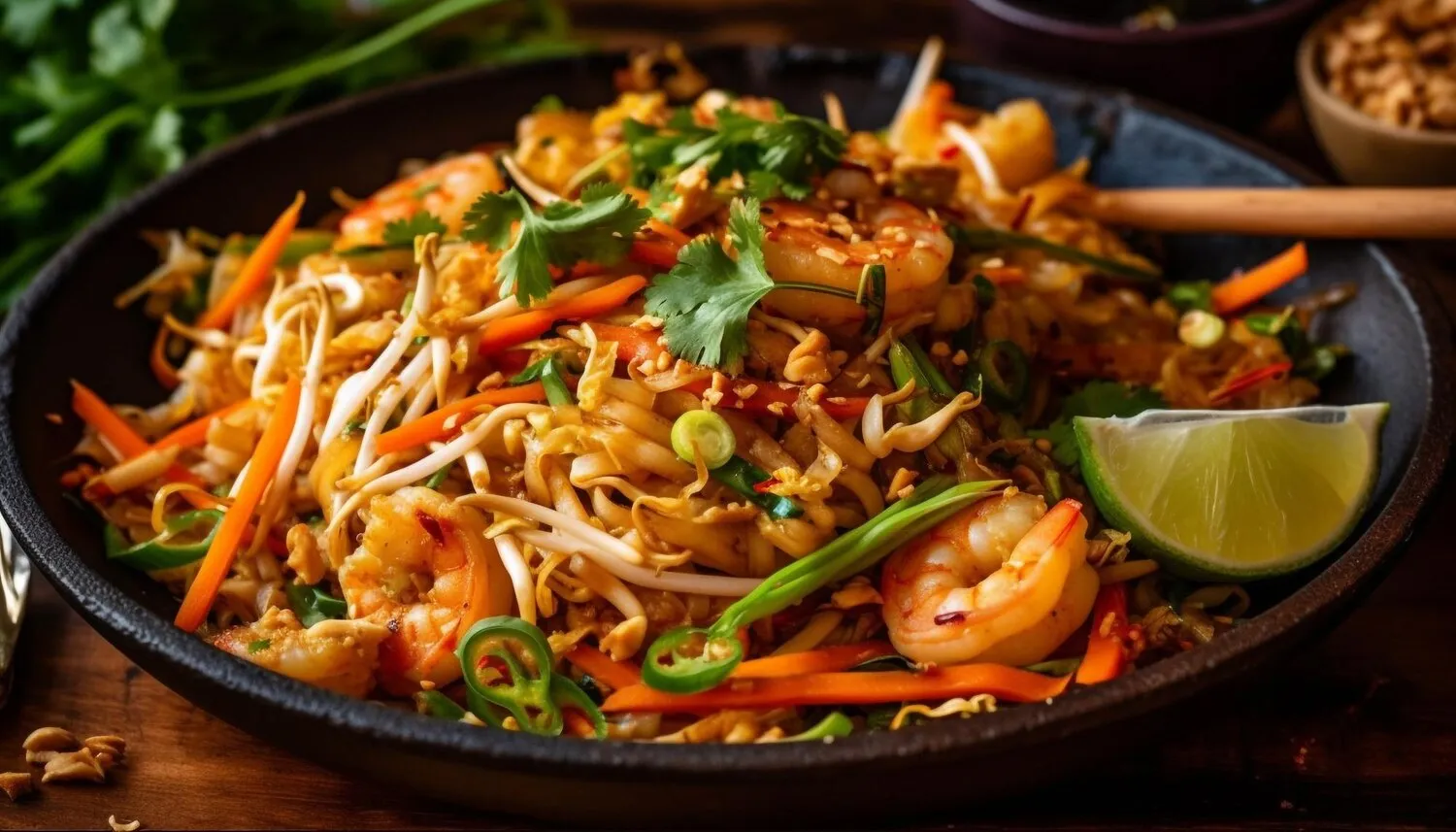
Udon Noodles
Japanese noodles in broth or stir-fried, a comforting and flavorful dish.
Nutrition Facts
* The % Daily Value (DV) tells you how much a nutrient in a serving of food contributes to a daily diet. 2,000 calories a day is used for general nutrition advice.
Kyoto Sushi
Udon noodles are believed to have been introduced to Japan from China during the Nara period (710-794 AD) by Buddhist monks. Initially a luxury food, accessible primarily to the wealthy aristocracy, udon gradually became more widely consumed throughout the Edo period (1603-1868) as wheat cultivation increased.
Udon holds a significant place in Japanese cuisine and culture, representing comfort food, regional specialties, and seasonal celebrations.
Regional Variations
Udon varies significantly by region. Sanuki udon from Kagawa prefecture is known for its thick, chewy noodles and simple dashi broth. In Nagoya, kishimen udon is wider and flatter. Each region boasts unique preparations and ingredients that reflect local tastes and traditions.
Seasonal Eating
Certain udon dishes are associated with specific seasons. Tsukimi udon (moon-viewing udon), topped with a raw egg resembling the full moon, is traditionally enjoyed during the autumn harvest festival. Hot udon soups are particularly popular during the colder months, offering warmth and nourishment.
Everyday Meal
Udon is a common and affordable meal, often enjoyed in casual eateries and at home. Its simplicity and versatility make it a staple in Japanese diets, suitable for a quick lunch or a comforting dinner.
Udon boasts a comforting, mild, and subtly savory flavor profile that makes it incredibly versatile. The taste largely depends on the broth and accompanying ingredients, ranging from light and delicate to rich and umami-packed.
The primary flavor comes from the dashi broth, typically made with kombu (kelp) and katsuobushi (bonito flakes), providing a foundational umami taste. Soy sauce and mirin add sweetness and further enhance the savory notes. Common toppings such as tempura, scallions, aburaage (fried tofu), and kamaboko (fish cake) contribute their unique flavors and textures. Stir-fried udon variations often feature savory sauces like yakisoba sauce or soy-based glazes, delivering a more intense and robust taste.
Noodle Texture
Achieving the perfect udon texture is crucial. Overcooked noodles will be mushy, while undercooked noodles will be too firm. Cook the noodles according to package instructions, and be sure to rinse them thoroughly after cooking to remove excess starch.
Dashi Broth
A high-quality dashi broth is the foundation of delicious udon. Using good quality kombu and katsuobushi will significantly improve the flavor. Consider experimenting with different dashi variations, such as shiitake mushroom dashi for a vegetarian option.
Topping Variety
Don't be afraid to experiment with different toppings to customize your udon. Tempura, tofu, vegetables, meat, and various sauces can add interesting flavors and textures. Presentation also matters – arrange the toppings artfully for a visually appealing dish.
Explore additional Noodles dishes and restaurants
Explore NoodlesDiscover top dining spots and culinary experiences in Georgetown.
Explore GeorgetownLearn more about the food culture, restaurant scene, and culinary heritage of Canada.
Explore Canada